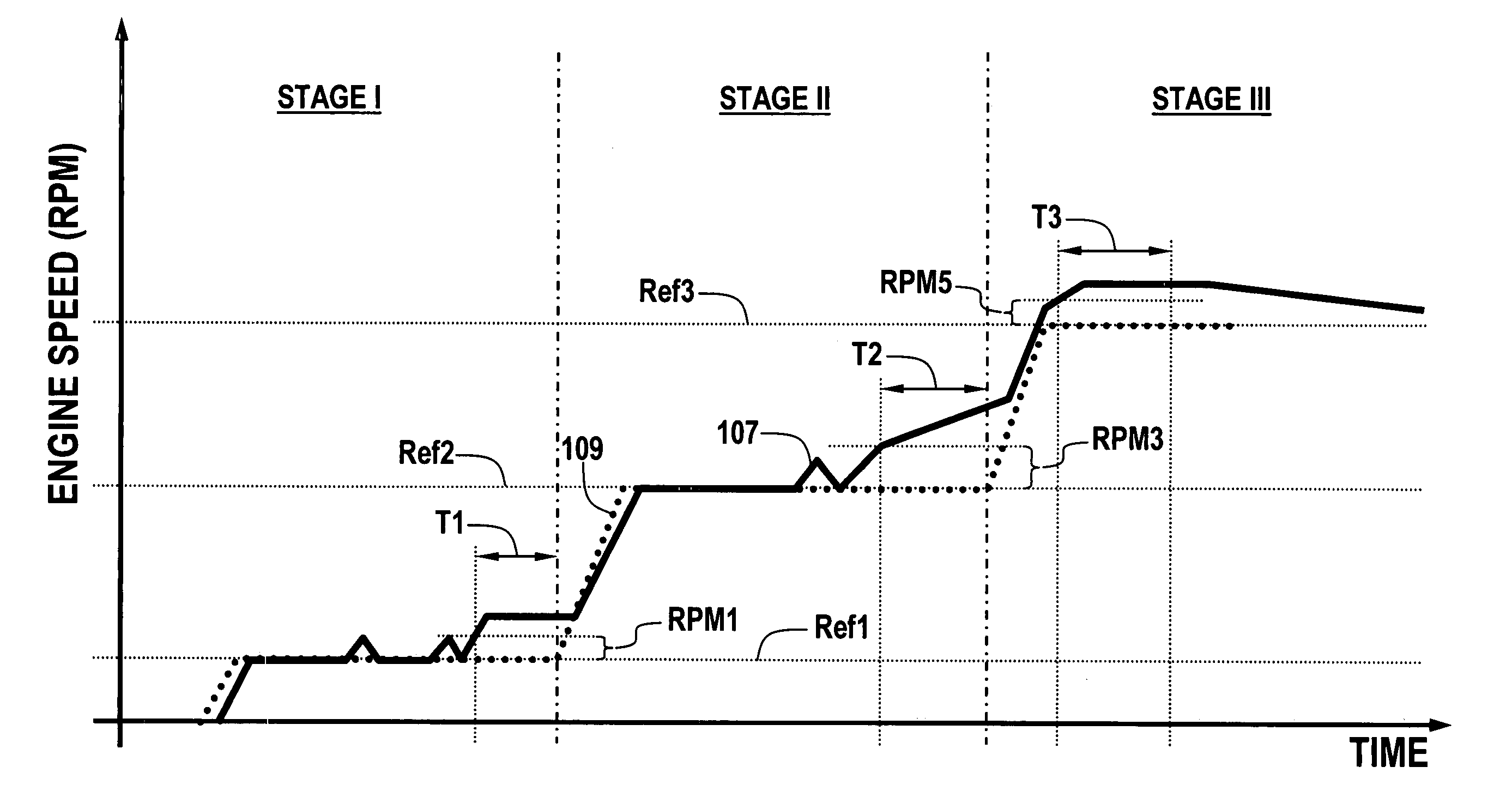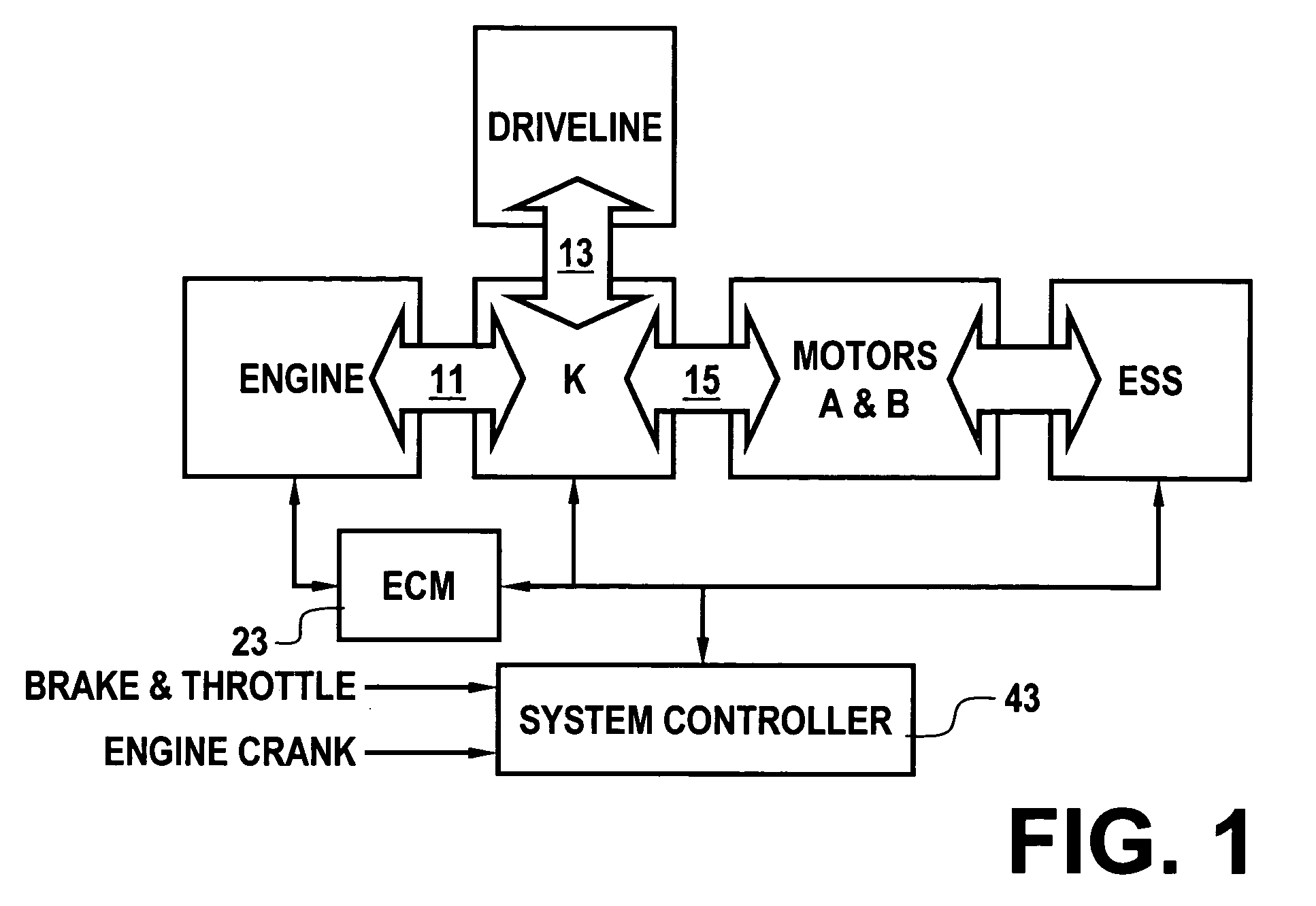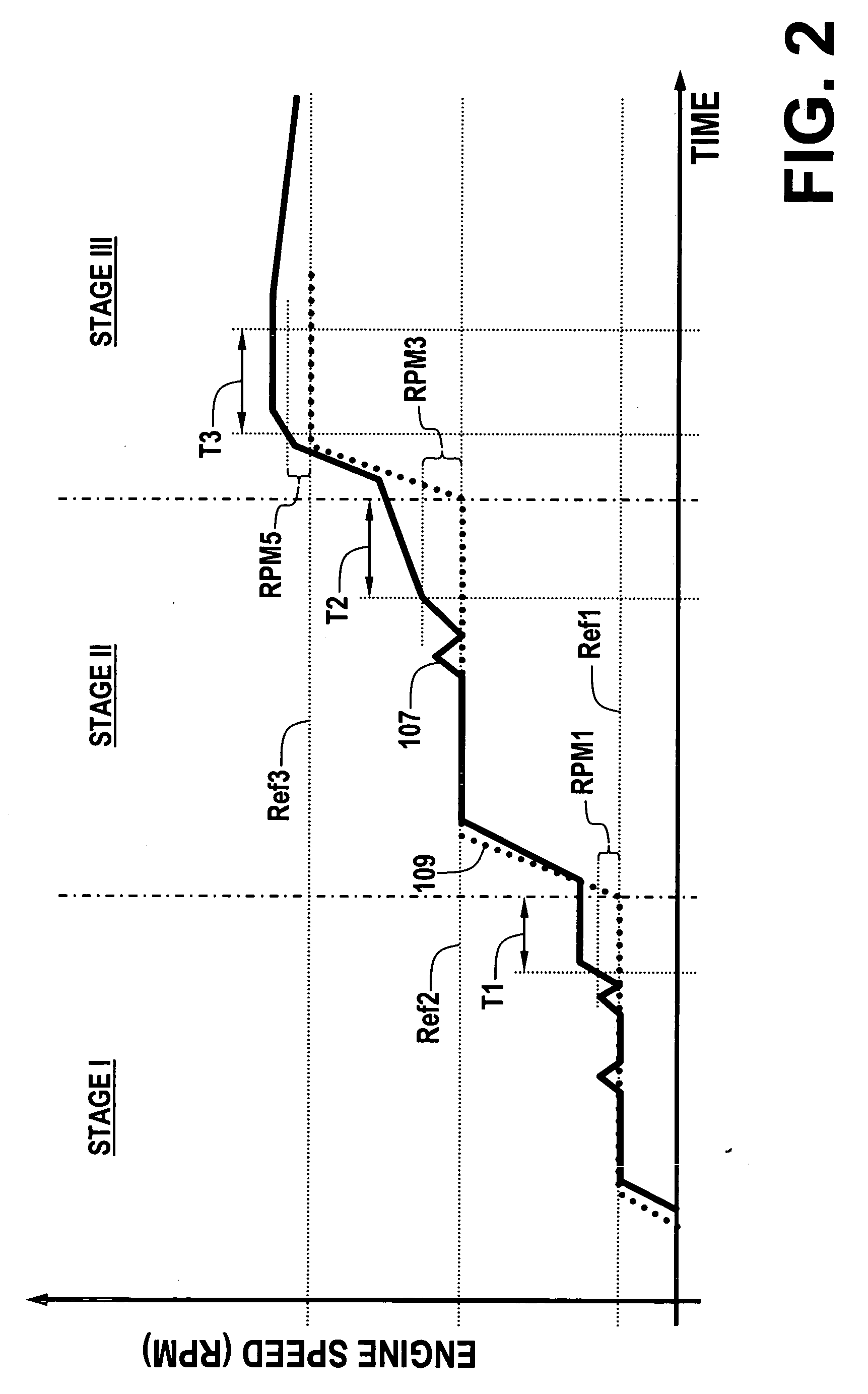Multi-stage compression ignition engine start
a technology of compression ignition and engine start, which is applied in the direction of engine starters, electric control, machines/engines, etc., can solve the problems of poor idle stability, excessive white smoke, and particularly susceptible to cold start of compression ignition engines
- Summary
- Abstract
- Description
- Claims
- Application Information
AI Technical Summary
Benefits of technology
Problems solved by technology
Method used
Image
Examples
Embodiment Construction
[0010] With reference first to FIG. 1, a block diagram of an exemplary dual-motor, electrically variable transmission powertrain to which the present invention is applicable is illustrated. The powertrain includes a diesel compression ignition engine, a vehicle driveline and a pair of electric motors. The motors (identified as A and B), driveline and engine are operatively coupled to one another, for example, through a coupling means (K) comprising one or more planetary gearsets and selective coupling paths established in accordance with application and release of various torque transfer devices, e.g., clutches. The engine is coupled (11) to the coupling means at a mechanical input thereof. The driveline is coupled (13) to the coupling means at a mechanical output thereof. The motors are coupled (15) to the coupling means at various rotating members of the planetary gearsets. Neglecting power losses, the power flows between the engine, driveline and motors balance. And, the power at...
PUM
 Login to View More
Login to View More Abstract
Description
Claims
Application Information
 Login to View More
Login to View More - R&D
- Intellectual Property
- Life Sciences
- Materials
- Tech Scout
- Unparalleled Data Quality
- Higher Quality Content
- 60% Fewer Hallucinations
Browse by: Latest US Patents, China's latest patents, Technical Efficacy Thesaurus, Application Domain, Technology Topic, Popular Technical Reports.
© 2025 PatSnap. All rights reserved.Legal|Privacy policy|Modern Slavery Act Transparency Statement|Sitemap|About US| Contact US: help@patsnap.com



